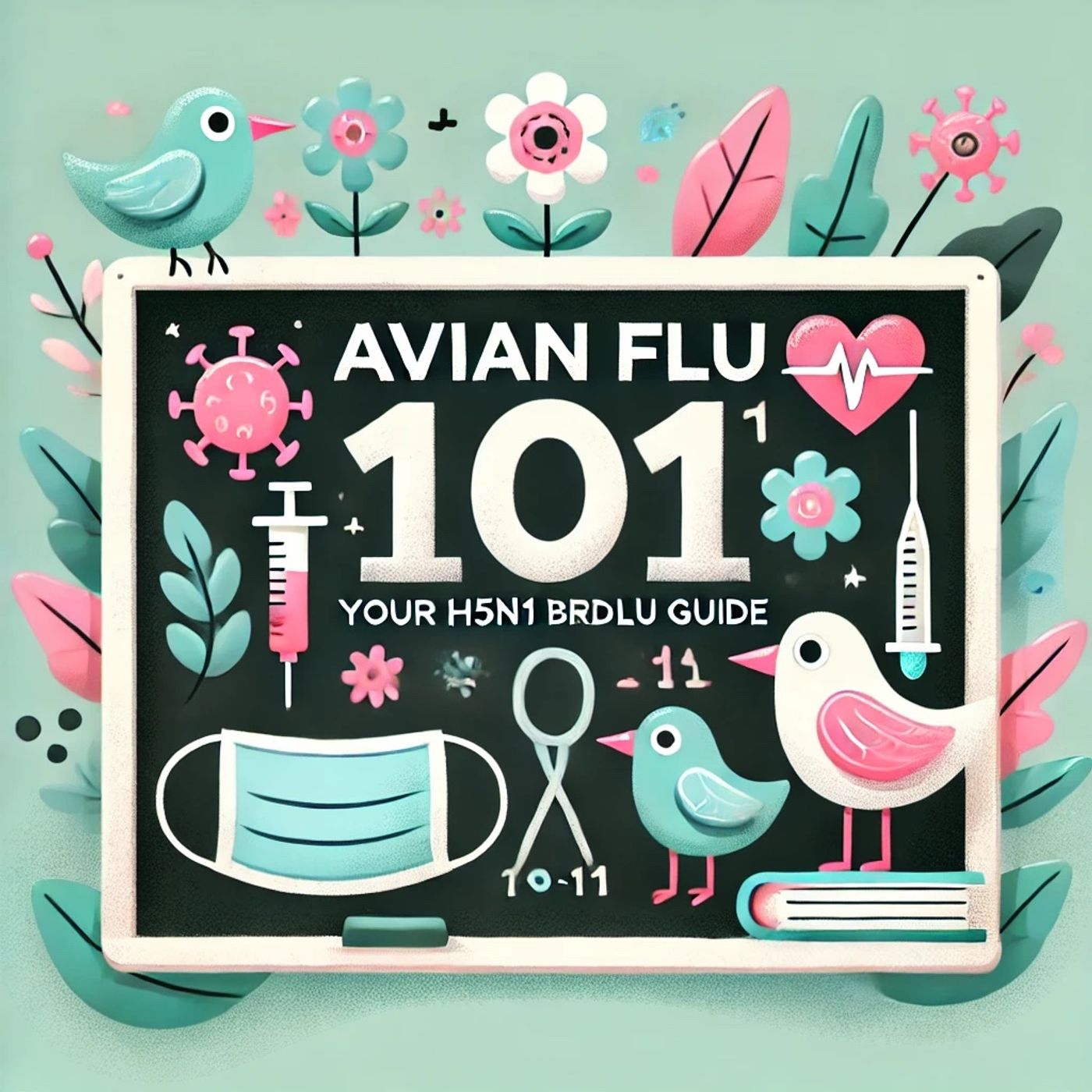Podcast Episode Details
Back to Podcast Episodes
H5N1 Bird Flu Explained: What You Need to Know About Avian Influenza and Your Health
Avian Flu 101: Your H5N1 Bird Flu Guide
Welcome to Avian Flu 101: Your H5N1 Bird Flu Guide, a three-minute primer from Quiet Please. If you’ve never heard of H5N1 or bird flu, you’re in the right place. Let’s break it down together so you can stay informed and calm.
First, what is H5N1? Scientists classify **influenza A viruses** by two special proteins on their surface—H and N. The H5N1 subtype is known as **avian flu** or **bird flu**. It was first found in 1996 and quickly gained a reputation for spreading among birds and other animals. According to the University of Florida, this strain can devastate chicken flocks within two days. Since 2022, nearly 200 million chickens in the U.S. have been infected. While H5N1 mostly infects birds, it has also been seen in mammals like cows, foxes, and even dolphins.
So how does H5N1 get from birds to people? Imagine the virus as a sticky burr from a plant. When wild birds rub against farm animals or humans, those sticky burrs—H5N1 particles—can latch on to new hosts. Most human cases have happened in farmworkers or people who work with poultry, and symptoms tend to be mild—often just pinkeye, fever, or mild respiratory trouble. The general public’s risk is still low, but experts are watching the virus closely because it could mutate to spread more easily or become more severe.
Let’s take a quick step back in history. Past bird flu outbreaks have shown us a couple of lessons. First, when viruses jump from animals to people, it usually happens through very close contact. Second, flu viruses like H5N1 mutate quickly, which is why scientists keep track of every outbreak and test new vaccines. Most human H5N1 infections have not been deadly, but earlier strains overseas did cause severe disease. Because viruses change, monitoring and rapid response are vital.
You may hear different words in news reports: H5N1, avian flu, bird flu, and HPAI. All these refer to the same family of highly pathogenic viruses that mainly target birds, but sometimes spillover into other animals, including humans.
Now, how does H5N1 compare to seasonal flu and COVID-19? Seasonal flu is widespread every year, infecting millions, but usually causes mild illness. H5N1 is much rarer in people and usually linked to very specific exposures, like handling infected birds. According to comparative research published by the National Institutes of Health, COVID-19 has a higher transmission rate and mortality in humans than seasonal flu. Bird flu is in a different category, usually less contagious between people but with the potential for severe illness if it mutates.
Let’s wrap up with some common questions:
Q: Can you catch H5N1 from eating cooked chicken or eggs?
A: Properly cooked poultry and eggs are safe to eat. The virus doesn’t survive the heat of normal cooking.
Q: Who is most at risk?
A: People who work with poultry or dairy cows are at the highest risk. For most people, daily routines pose very little risk.
Q: Is there a vaccine for H5N1?
A: There are some vaccines for high-risk groups like farmworkers, but they aren’t widely used. New vaccines are being tested.
Q: How are H5N1 infections treated?
A: Antiviral medications like oseltamivir, known as Tamiflu, are effective if started early.
Thanks for tuning in to Avian Flu 101. Remember, the best defense is knowledge and good hygiene. We hope you found this episode helpful—come back next week for more! This has been a Quiet Please production. For more, check out Quiet Please Dot A I.
For more http://www.quietplease.ai
Get the best deals https://amzn.to/3ODvOta
This content was created in partnership and with the help of Artificial Intelligence AI
Published on 2 weeks, 2 days ago